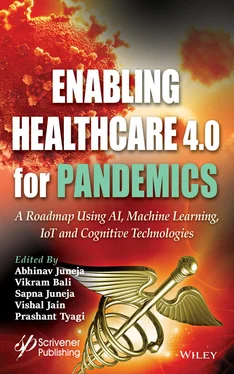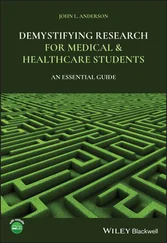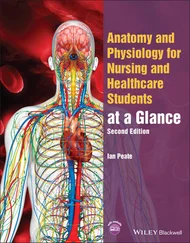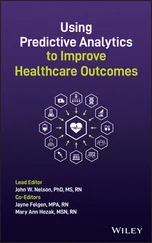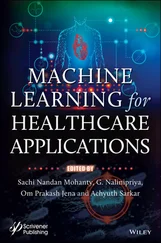Chapter 6, “Emerging Technologies for Handling Pandemic Challenges,” focuses on computational strategies and factors wherein AI and big data can help in dealing with the gigantic, unprecedented number of records obtained from open health surveillance.
Chapter 7, “Unfolding the Potential of Impactful Emerging Technologies Amid COVID-19,” reviews the technologies used in combating previous epidemics such as Ebola and SARS, and provides significant insights into emerging technologies used to combat COVID-19. It classifies the technology into five major groups and then discusses its use in the least developed, developing, and developed countries.
Chapter 8, “Advances in Technology: Preparedness for Handling Pandemic Challenges,” outlines the role of technological advancements during the time of the pandemic. As digital technology intervenes to control the disastrous effect on humankind, it simultaneously introduces several challenges that are highlighted in the chapter.
Chapter 9, “Emerging Technologies for COVID-19,” presents several innovative emerging technologies for handling the pandemic challenges discussed. The new technologies that can tackle these key challenges include blockchain, drone facilities, Mobile APK, wearable sensing, internet of healthcare things, AI, 5G and virtual reality. Soon these technologies will be used in managing pandemic challenges.
Chapter 10, “Emerging Techniques for Handling Pandemic Challenges,” proposes the latest technologies used in making predictions that are more accurate than ever in dealing with crisis situations such as a pandemic. It covers all major factors and emerging technologies that will help to efficiently manage, handle and control such pandemic situations now and in the future.
Chapter 11, “A Hybrid Metaheuristic Algorithm for Intelligent Nurse Scheduling,” addresses issues such as staff scheduling problems in hospitals. The challenge is to assign nurses to various shifts over a certain planning period to meet a number of constraints such as the contractual working time, maximum working time per day and so on. Also proposed is a method that groups nurses into clusters, where each cluster is served by a schedule optimized by a hybrid metaheuristic which is a combination of particle swarm optimization (PSO) and grey wolf optimizer (GWO).
Chapter 12, “Multipurpose Robotic Sensing Device for Healthcare Services,” focuses on the fabrication of a robot that has multiple uses and is employed in different areas required by the user.
Chapter 13, “Prevalence of the Internet of Things in a Pandemic,” presents an overview of IoT-driven systems in the healthcare sector for monitoring patients. Implementation of such technology will help to decrease healthcare expenses and enhance treatment of infected patients.
Chapter 14, “Mathematical Insights into COVID-19 Infection: A Modeling Approach,” discusses the increasing use of mathematics in epidemic disease research. The complexity of disease is appropriate for quantitative methodologies as it allows for in-depth probing of issues and the probability of a new turn of events. Computational models can supplement exploratory and clinical investigations, and can also challenge flow standards, reclassify our comprehension of systems driving epidemiology and shape future research.
Chapter 15, “Machine Learning: A Tool to Combat COVID-19,” proposes a model that uses ML approaches based on the analysis of data of two Indian states—Delhi and Maharashtra—where the maximum number of infected cases are found. This study is an attempt to help improve decision-makers planning and actions. In this study, neural network (NN) and M5P model trees are applied to forecast the number of infected cases with each progressive day.
In conclusion, the editors believe that readers will find that the efforts of all the contributing authors will enhance their research needs in various disciplines. It will also open up new opportunities and avenues by exploring different ways of dealing with unforeseen sudden changes in our environment. Overall, every effort has been made to present a book that acts as an encyclopedia of the current state of practice in the domain and also furnish investigative knowledge on future technologies which will promote human evolution and provide a framework for innovative resolutions to real-world problems. Happy learning!
Vishal KumarJuly 2021
Part 1 MACHINE LEARNING FOR HANDLING COVID-19
1
COVID-19 and Machine Learning Approaches to Deal With the Pandemic
Sapna Juneja1*, Abhinav Juneja2, Vikram Bali3 and Vishal Jain4
1IMS Engineering College, Ghaziabad, India
2KIET Group of Institutions, Ghaziabad, India
3JSS Academy of Technical Education, Noida, India
4Sharda University, Greater Noida, India
Abstract
The whole world is struggling to live with COVID-19 and even a single step of technology revolution can help in dealing with this pandemic. Artificial Intelligence and Machine Learning approaches are being used by the researchers around the globe to completely understand and address this situation. In this Corona crisis, companies are trying to implement this AI and ML techniques in various fields ranging from manufacturing, resource management, remote monitoring etc. On the other hand, ML approach is being used by the researchers for supporting healthcare related issues arisen due to COVID-19.
Keywords:COVID-19, support vector machine, convolutional neural network, drones
Pandemics are a serious issue for human community. In general COVID-19 is not the first pandemic ever in the history and it will not be the last also. Many researchers across the globe are working towards the same in order to deal with it. The aim of this research is to shed a light on their efforts in order to identify that how machine learning approach can be useful in such situation. Machine Learning techniques can help out the researchers in determining the people who are more prone to risk of COVID-19, diagnosing such patients, help in the speedup of drug development, analyze the existing medicines which can be useful in this disease, prediction of escalation of the disease, help out in recognizing the virus in a more better way, and forecast the upcoming or next pandemic if any using the deep learning and machine learning approaches. Corona virus is a part of virus family and it is very hazardous for human body [1]. Many viruses of this family spread globally few years back, one of which is SARS in year [2] 2003 and another one was MERS in year 2012 [3]. The first case of Corona virus or Novel Corona virus appeared in Dec. 2019 so the World Health Organization named it as COVID-19 which stands for Corona virus Disease 2019. In March, 2020 the WHO announced Corona virus as a pandemic because of its huge spread among several countries which caused many persons critical ill and many got dead. It originated from a city of China named Wuhan where the first case of COVID appeared. The whole world is fighting against this deadly disease as no solution or vaccine till now has been developed against this disease that has the capability of generating antibodies in human being towards this corona virus. By July 24, the confirmed COVID cases in the whole world are 15,519,580 out of which 8,824,408 patients has been recovered and 633,605 deaths [4].
1.1.1 COVID-19 and its Various Transmission Stages Depending Upon the Severity of the Problem
COVID-19 is a contagious disease and can transmit through touch, contact or droplets of infected person. This transmission of COVID-19 is divided into 4 stages as:
Читать дальше
